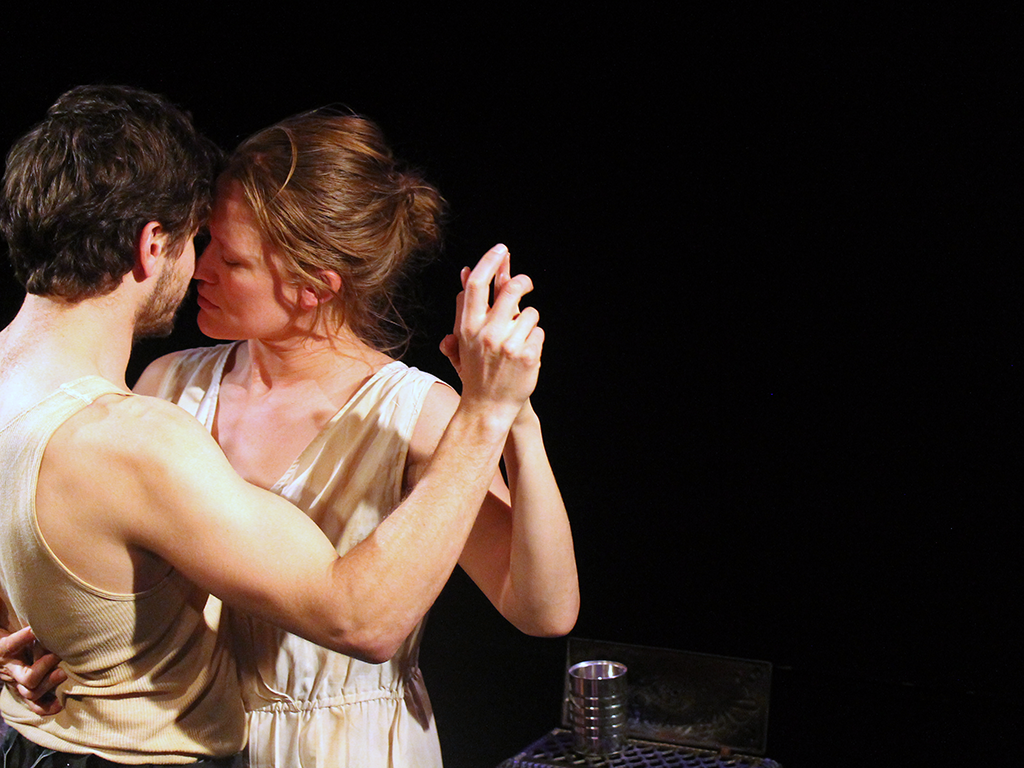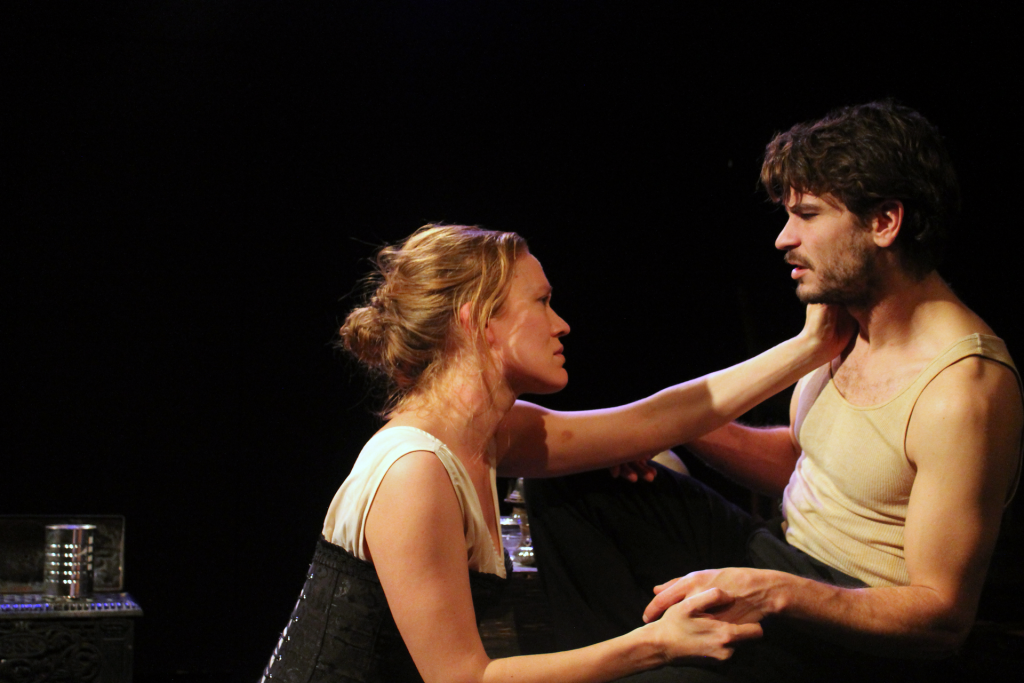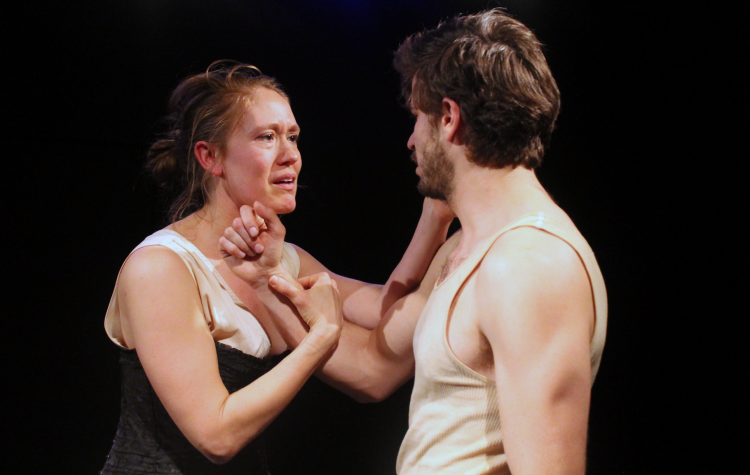Well, technically this isn’t a playdate review, and no, I don’t literally do cocaine. I was fed up with online dating, so I went alone to the opening night of “Cocaine,” a two-hander by Pendleton King at the John DeSotelle Studio in Hell’s Kitchen. And in the crowded lobby of the Nubox I met a guy the old fashioned way. Call him “Joe,” like the play’s dope-addicted boxer, if only because after the show he took to calling me “Kid,” like Joe calls his best gal Nora. “Joe” is an avid theatre-goer and friend of the cast, which I know raises doubts about my objectivity. But hey, Playdate was never about objectivity. It’s about one woman’s theatergoing experience, and “Joe” was very much a part of it. So kudos to “Cocaine” for bringing us together.
It was literally cocaine that brought Joe and Nora together in 1910s New York. Six years his senior, she took the strapping young boxer under her wing and now walks the streets to keep the two of them and their habit fed. Or she did until a sore on her lip sent the Johns running. The rent hasn’t been paid in weeks, and the landlady is demanding sexual favors from Joe in exchange for dope. Drug addiction, male and female prostitution—edgy stuff for a play written in 1916. Even Brecht’s “Threepenny Opera” a decade later leaves drugs out of the equation when describing a similar arrangement in The Pimp’s Song.

We meet Joe and Nora in their garret, artfully suggested by a slanted wall of irregular planks and authentic period furniture. But rather than start the play naturalistically, director Judith Feingold treats us to an intriguing prelude of expressionist physical theater. Against the roar of the elevated train and music from old radio broadcasts, the couple writhe in each others’ arms like tortured fornicators in Dante’s Inferno, caught in limbo between agony and ecstasy.
The ensuing dialogue relies on street slang from the period, making it hard to follow in parts. But the gist of the story is clear: The situation is hopeless, and Nora wants Joe to commit suicide with her. Maria Swisher delivers a fierce performance as Nora, half femme fatale, half prostitute with a heart of gold, driven by an excess of love. André Vauthey’s broken Joe puts up a bewildered fight for his life and hers until Nora wounds his pride, the one thing he has left. What happens next is better seen than told.
As a faithful revival of a forgotten play, “Cocaine” delivers. Swisher and Vauthey have palpable chemistry, and Feingold choreographs their Danse Macabre with real feeling. Personally, I would have liked to see the expressionist elements from the prelude woven into the fabric of the play. Or, since the play ends (spoiler alert) with the characters in the same situation as at the beginning, why not have the play end as it began? Otherwise we leave the theater thinking something has been resolved, when in fact the couple’s position is as desperate as ever.

After the show, “Joe” and I walked around Hell’s Kitchen and tried to imagine how this story would play out today. We realized that the people and problems are basically the same. Only the clothes and cars are different. Addiction, poverty, exploitation, prostitution are all around us and always have been. How many people in New York alone are peering over the edge today and saying, as Joe does, “We weren’t anybody much. I expect they’ve forgotten about us”?
With its emphasis on big gestures and big emotions, “Cocaine” offers little in the way of insight into the social problems it dramatizes. But it does something equally, if not more, important: It reminds us of their human cost.
“Cocaine” ran from November 22 – 24 at the Nubox in Hell’s Kitchen. For more information visit show’s Facebook events page.

